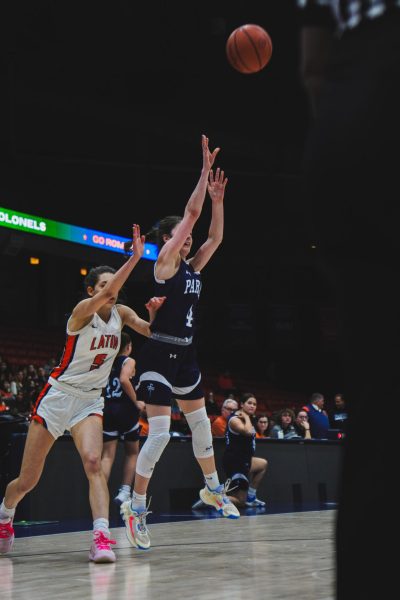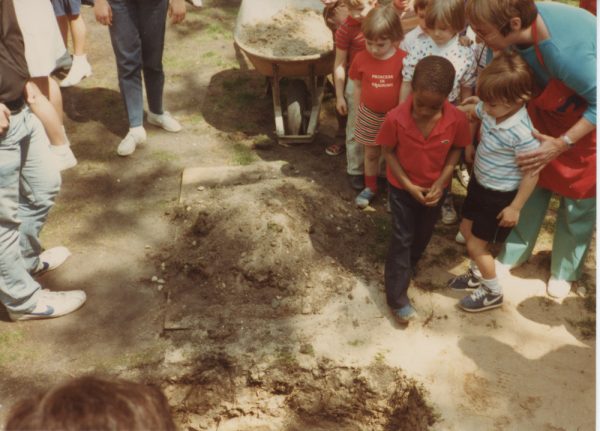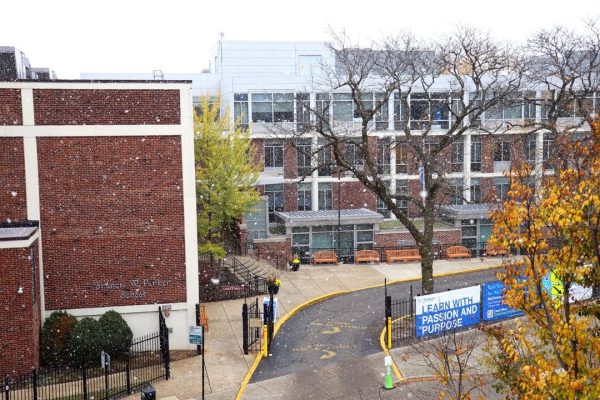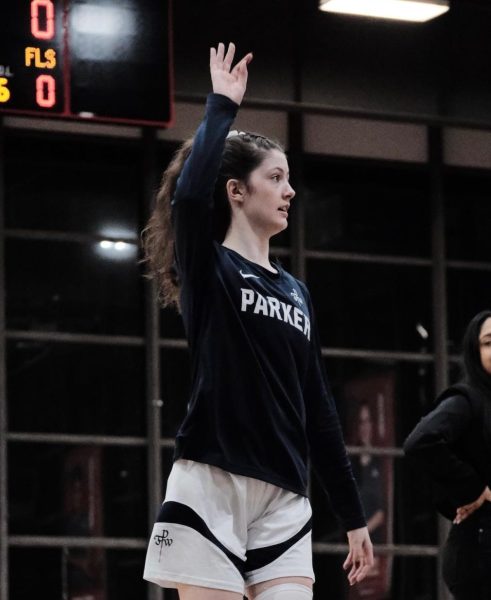Inside the Medicine Cabinet
‘Prescription Meds, Use, Abuse, and Addiction’
For high school students with attention deficit hyperactivity disorder (ADHD), medicine bottles offer a means to increase focus. Stimulants such as Adderall, Ritalin, and Vyvanse allow students without an ADHD diagnosis to pull supernatural stunts.
Executing consecutive all nighters. Finishing essays at 4 a.m. Classes that would typically be boring magically captivating your interests.
This ‘pill popping’ culture can be found in the midst of a crowd at a music festival, behind the stage at a rock concert, or in the basement of a high school teenager whose parents have gone away for the weekend.
Or so we see in movies.
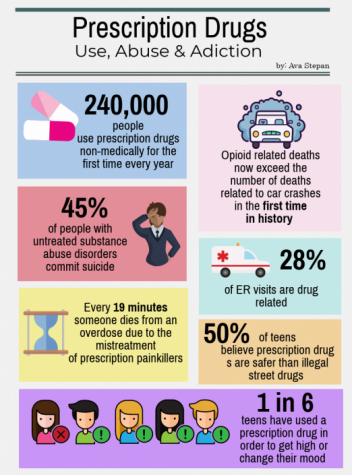
When asked what they presumed to be the largest spreading illicit drug in America, a group of seniors sprawled over the chairs in the 4th floor hallway looked around and chuckled at each other. “Heroin!” one boy blurted out. The group exploded into laughter, but shrugged in agreement.
When asked the same question, a freshman girl lounging on the catboxes listening to music alone took a moment to consider. “Cocaine? I don’t know.” She shrugged and popped her earbud back in.
It is prescription drug abuse that most significantly affects the lives of teenagers. According to National Survey on Drug Use and Health (NSDUH) data, more than 5,700 youth reported using prescription drugs, specifically pain relievers, without permission from a doctor in 2014.
In May of 2017, all students in the Upper School completed a drugs and alcohol survey created by Freedom from Chemical Dependency (FCD) to collect data regarding substance abuse in the high school.
According to the results of the survey, which were recently disclosed, 6% of 9th graders, 8% of tenths graders, 9% of 11th graders, and 14% of 12th graders at Parker admitted to misusing prescription amphetamines in the last 12 months. In response to this survey, a new discussion has emerged among Parker parents, students, and faculty.
On January 9, parents of 7-12 grade students attended “Prescription Meds: Use, Abuse, and Addiction,” a presentation by Karen Pierce, MD. Pierce is a psychiatrist native to Chicago, who is one of 181 colleagues who specialize in Psychiatry at Northwestern Memorial Hospital. This is Pierce’s 39th year studying and practicing the psychological behaviors of children and adolescents, particularly those who have experienced obstacles with substance abuse.
Prescription drugs can cause overwhelmingly detrimental effects to the brain and body of a young adult. During adolescence, the development of the prefrontal cortex allows teenagers to learn to prioritize, strategize, practice self-restraint, and curb impulses. In this time, the brain also experiences a surge of growth, allowing the child to become more advanced in regards to processing conceptual information and grasping authoritative rules and expectations. “We have adolescents who are trying meds at 12, 13, and 14 years old,” Pierce said. “They have no way of weighing their decisions.” Some students at Parker know the very decisions she’s referencing.
“I have a friend who takes adderall, and although she does have a prescription, she often offers it to other people, and doesn’t take the recommended dosage,” an anonymous sophomore girl said. “I think the accessibility of prescription drugs is what makes them so dangerous and potentially fatal. The severe side effects of taking prescription drugs are much more extreme and intense than the effects of marijuana or alcohol…But at the same time, there is much less awareness about the negative effects of prescription drugs.”
Developmental processes continue to flourish until early/mid-twenties, but prescription drug use in the years leading up to adulthood may handicap brain growth. As 9th graders are taught in their health classes, drug use can fracture neural pathways, which become hardwired during these developmental years. “We’re trying to be proactive,” Upper School Counselor Gary Childrey said. “The opioid crisis is sweeping across the country, and if our community members know what to do, this issue can be easily prevented.”
Habits that are established during adolescence are often habits that stick. “The earlier you begin,” Pierce said, as her presentation changed from green to blue, and images above her brown, curly hair showed contrast between an undeveloped 14-year-old brain, and a fully developed 26-year-old brain, “the more likely it is that you develop addiction problems throughout your life.”
In her presentation, Pierce says that the main issue at hand is doctors overprescribing their patients medication. “Most people need five days of meds after surgery,” she said. “No more. No refills. Physicians have contributed to this problem as much as other factors.”
Those who have access to prescriptions are under intense and constant pressure from peers who would like to buy their pills. “During finals time, any kid that knows me knows that I will not refill their stimulant prescriptions,” Pierce said, “Kids who actually need these meds make good money when their peers are experiencing high academic stress.”
When prescribed unnecessary medicine, children and adults alike become reliant on the prescription–often leading to addiction. “Addiction knows no race, gender, ethnic group, religion, or socio economic status.” Pierce said. “Drugs are ubiquitous. You can get them anywhere.”
Pierce looked through her dark blue glasses into the cluster of concerned parents and sighed. “One of the hardest things to see in our kids is pain,” she said. “We want to help them, but we can’t bubble wrap them. We need to teach our children how to survive life’s pain and overcome challenges without resorting to the medicine cabinet.” Parker students have work to do too.
“Most school are too scared to take data.” she says, “In that way, Parker is already ahead.”








